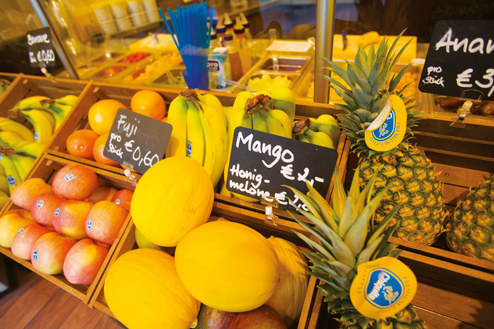How To Pay
Germany might be a wealthy consumer nation but, true to its people’s pragmatic nature, personal debt is low when compared to other western countries like the US and Australia. This is largely because Germans prefer to pay in cash – don’t even bother flashing your plastic at the markets or street stalls, and be prepared for many family-run shops and restaurants to have a cash-only policy. Be aware too that you’re bound to invite disdain if you hand over a large note for a small total.
Credit cards are generally accepted at department stores and larger retailers. MasterCard and Visa are most widely established, American Express and Diners Club slightly less so. If you open a German account you’ll be issued with an EC card, which allows you to debit directly from your account at a checkout (in lieu of signing the receipt). See Residents. Direct debit is widely available for purchases over €10. Unless otherwise advertised, it’s also acceptable to pay by personal cheque.
The basic Value Added Tax (VAT) rate in Germany is 19% for most goods and services, although some items, such as medication, food and books, are taxed at a reduced rate of 7%. If you’re returning to a residence outside Germany within three months of purchase, you can apply for a VAT refund. Ask for the VAT reclaim form in store when purchasing. Some department stores, such as Karstadt (0180 511 4414, www.karstadt.de) have a dedicated register, so you can get your tax refund on the spot. When you get to the VAT office at the airport, you’ll need to show officials the original receipt, purchased goods still in their packaging and your passport to prove you reside outside the EU (expect a slow queue so get there early). For more information on buying duty free, visit the www.multivat.eu.
Credit cards are generally accepted at department stores and larger retailers. MasterCard and Visa are most widely established, American Express and Diners Club slightly less so. If you open a German account you’ll be issued with an EC card, which allows you to debit directly from your account at a checkout (in lieu of signing the receipt). See Residents. Direct debit is widely available for purchases over €10. Unless otherwise advertised, it’s also acceptable to pay by personal cheque.
The basic Value Added Tax (VAT) rate in Germany is 19% for most goods and services, although some items, such as medication, food and books, are taxed at a reduced rate of 7%. If you’re returning to a residence outside Germany within three months of purchase, you can apply for a VAT refund. Ask for the VAT reclaim form in store when purchasing. Some department stores, such as Karstadt (0180 511 4414, www.karstadt.de) have a dedicated register, so you can get your tax refund on the spot. When you get to the VAT office at the airport, you’ll need to show officials the original receipt, purchased goods still in their packaging and your passport to prove you reside outside the EU (expect a slow queue so get there early). For more information on buying duty free, visit the www.multivat.eu.













